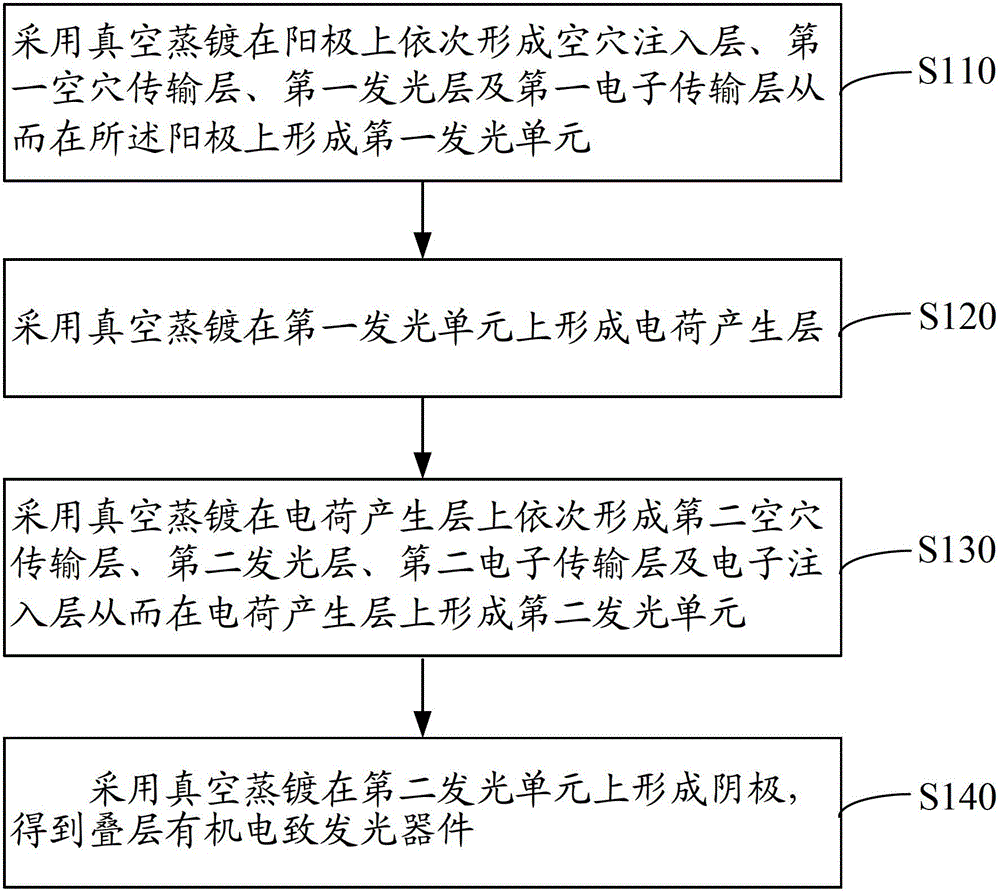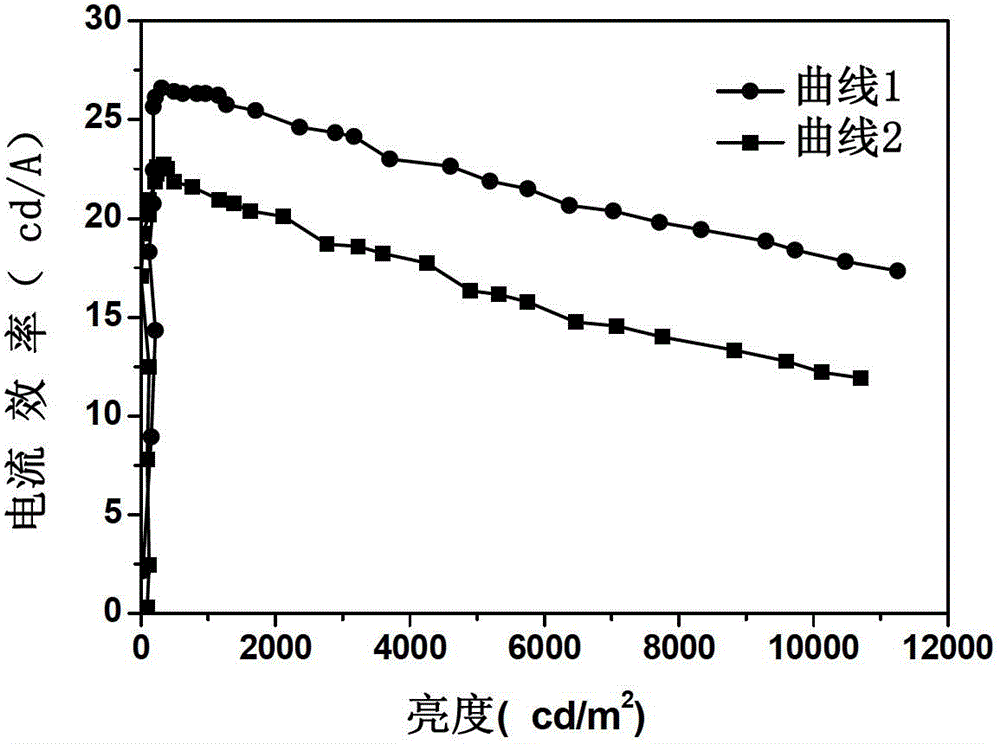Stacked organic light emitting device and preparation method thereof
An electroluminescent device, organic technology, applied in the direction of electric solid device, semiconductor/solid device manufacturing, electrical components, etc., can solve the problems of low transmittance and low efficiency, and achieve strong permeability, high luminous efficiency, The effect of preventing total reflection of light
- Summary
- Abstract
- Description
- Claims
- Application Information
AI Technical Summary
Problems solved by technology
Method used
Image
Examples
preparation example Construction
[0065] see figure 2 , a method for preparing a stacked organic electroluminescent device according to an embodiment, comprising the following steps:
[0066] Step S110: sequentially forming a hole injection layer, a first hole transport layer, a first light emitting layer and a first electron transport layer on the anode by vacuum evaporation to form a first light emitting unit on the anode.
[0067] Anodes are provided. The anode is indium tin oxide glass (ITO), aluminum zinc oxide glass (AZO) or indium zinc oxide glass (IZO).
[0068] Sonicate the anode with detergent, deionized water, acetone, ethanol, and isopropanol for 15 minutes each to remove organic pollutants on the anode surface, and then dry it for later use.
[0069] A hole injection layer, a first hole transport layer, a first light emitting layer and a first electron transport layer are successively formed on a clean and dry anode by vacuum evaporation to form a first light emitting unit on the anode.
[007...
Embodiment 1
[0105] The structure is ITO / MoO 3 / TAPC / BCzVBi / TPBi / Bphen:F4-TCNQ:Ta 2 o 5 / TCTA / BCzVBi / TAZ / Cs 2 CO 3 Fabrication of Ag / Ag Stacked Organic Electroluminescent Devices
[0106] (1) Provide an anode, the anode is indium tin oxide glass, expressed as ITO. Sonicate the anode with detergent, deionized water, acetone, ethanol, and isopropanol for 15 minutes each to remove organic pollutants on the anode surface, then dry it and set it aside;
[0107] (2) Hole injection layer, first hole transport layer, first light-emitting layer and first electron transport layer are sequentially formed on the surface of the anode by vacuum evaporation, the pressure of vacuum evaporation is 5×10 -3 Pa; the hole injection layer, the first hole transport layer, the first light-emitting layer and the first electron transport layer are stacked in sequence to form the first light-emitting unit stacked on the anode; wherein the hole injection layer is formed by molybdenum trioxide, the thickness 40 ...
Embodiment 2
[0114] The structure is AZO / V 2 o 5 / TCTA / Alq 3 / TPBi / TAZ:2T-NATA:Nb 2 o 5 / NPB / Alq 3 / Bphen / CsN 3 Fabrication of / Pt stacked organic electroluminescent devices
[0115] (1) Provide the anode, the anode is aluminum zinc oxide glass, denoted as AZO. Sonicate the anode with detergent, deionized water, acetone, ethanol, and isopropanol for 15 minutes each to remove organic pollutants on the anode surface, then dry it and set it aside;
[0116] (2) The hole injection layer, the first hole transport layer, the first light-emitting layer and the first electron transport layer are sequentially formed on the surface of the anode by vacuum evaporation, and the vacuum evaporation pressure is 2×10 -4 Pa; the hole injection layer, the first hole transport layer, the first light-emitting layer and the first electron transport layer are stacked sequentially to form the first light-emitting unit stacked on the anode; wherein the hole injection layer is formed by vanadium pentoxide, Th...
PUM
 Login to View More
Login to View More Abstract
Description
Claims
Application Information
 Login to View More
Login to View More - R&D
- Intellectual Property
- Life Sciences
- Materials
- Tech Scout
- Unparalleled Data Quality
- Higher Quality Content
- 60% Fewer Hallucinations
Browse by: Latest US Patents, China's latest patents, Technical Efficacy Thesaurus, Application Domain, Technology Topic, Popular Technical Reports.
© 2025 PatSnap. All rights reserved.Legal|Privacy policy|Modern Slavery Act Transparency Statement|Sitemap|About US| Contact US: help@patsnap.com



